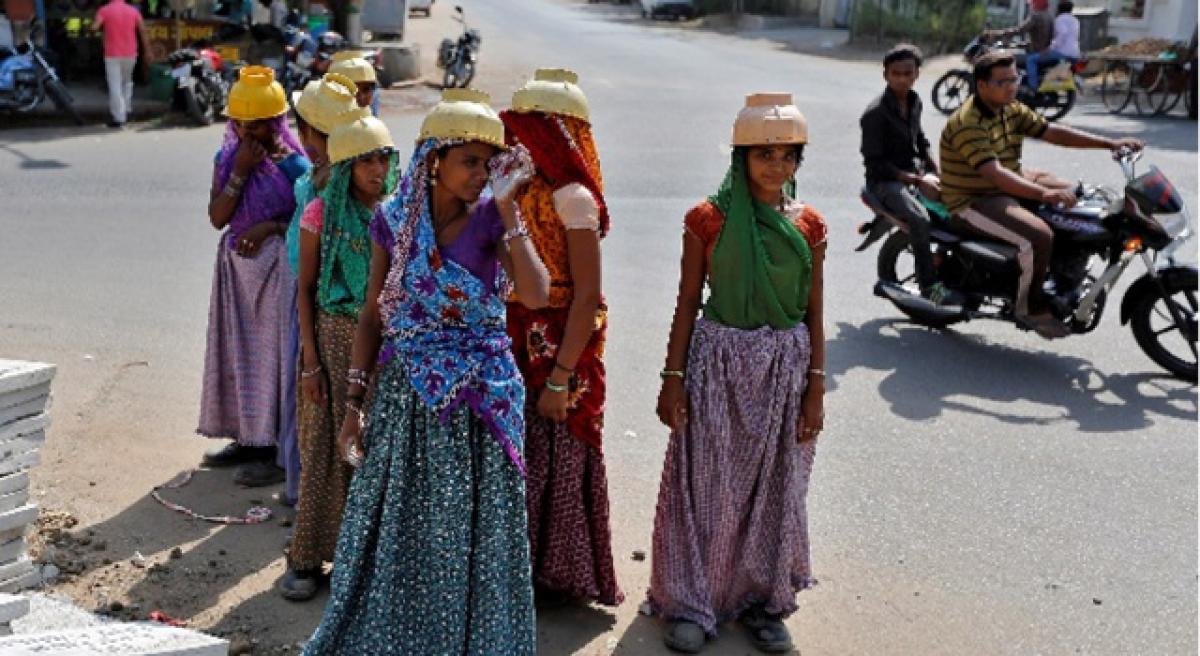Live
- Eatala dares Revanth for debate on Cong 6Gs
- Modi strengthens global ties at Rio de Janeiro
- 55% share price fall costs Ola Electric investors Rs. 38K cr
- Banks report synchronised growth in credit, deposits
- PM Awas 2.0 launched
- Target Kohli’s body, his front pads to put him on back-foot: Healy’s advice to Oz quicks
- LIC accused of thrusting Hindi
- Will make Warangal a la Hyderabad
- Will showcase Indiramma Rajyam: CM
- HC orders attachment of Himachal Bhawan
Just In

Women migrating for work and education between 2001 and 2011 grew at a rate that outpaced men who moved for similar reasons, shows an IndiaSpend analysis of Census data.
Women migrating for work and education between 2001 and 2011 grew at a rate that outpaced men who moved for similar reasons, shows an IndiaSpend analysis of Census data. In this period, the number of women migrating for work grew by 101 per cent, more than double the growth rate for men (48.7 per cent). Also, the number of women who cited business as a reason for migration increased by 153 per cent in 2001-11, more than four times the rate for men (35 per cent).
Women's migration is still driven primarily by marriage. In absolute numbers, 97 per cent of Indians migrating for marriage were women in Census 2011, a marginal drop from 98.6 per cent in Census 2001. Scholars have, however, argued that women do work post-migration even if their first reason for the move was matrimony.
"Women's migration is not adequately captured because the surveys ask for only one reason for migration to be stated. This is usually stated as marriage and the secondary reason, that is finding work at the destination, may not be mentioned," PriyaDeshingkar and Shaheen Akhtar of London's Overseas Development Institute had argued in an April 2009 UNDP paper.
"Many of the women who migrate for marriage do join the labour force," said a January 2017 Housing and Urban Poverty Alleviation Ministry report on migration, echoing Deshingkar and Akhtar. Between Censuses 2001 and 2011, the number of men who migrated for education rose by 101 per cent, less than half that for women, at 229 per cent.
Migration for work usually results in relief from poverty even if it means a rough life in India's metros. A migrant from Maharashtra's drought-stricken Marathwada region, for example, triples her income temporarily after moving to Mumbai, according to the report. A two-round survey of 904 households spread across Bihar in 1998-2000 and 2011 by Amrita Datta at the Institute for Human Development showed that, on average, households with migrants earned about Rs 11,000 more than households without migrants in 2011.
In the 11 years to 2011, the rise in the number of men who migrated for marriage grew by 176.6 per cent, more than four times the growth rate for women who moved for similar reasons (41.5 per cent). Between the two Censuses, marriage has remained the biggest reason for migration, dropping marginally to 49.35 per cent of all migrants in 2011 from 50 per cent in 2001.
The number of men saying they migrated either after birth or with the household rose at a slightly faster pace than women in 2001-11: 207 and 74 per cent for the first reason and 199 and 54 per cent for the latter. Numbers dropped for both genders reporting other reasons in 2001-11, but it fell more for women (17.5 per cent) than men (15 per cent). (IANS in arrangement with IndiaSpend.org)
By Vipul Vivek

© 2024 Hyderabad Media House Limited/The Hans India. All rights reserved. Powered by hocalwire.com







